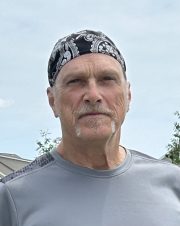Accessibility Checklist for SFWA Spaces
The SFWA Accessibility Checklist is provided for the use of conventions and other gatherings who want to ensure that their event is fully accessible by all attendees. Questions and feedback about the list should be directed to office@sfwa.org
- Event Committee Resources
- There is a member of the committee or event staff with working knowledge of accessibility issues, resources, and solutions assigned as Accessibility Liaison.
- Ground Transportation
- Cab companies providing service between the airport and the event hotel have wheelchair-accessible cabs in their fleets.
- Shared-ride shuttle companies providing service between the airport and the event hotel have lift-equipped vans in their fleets.
- Hotels providing shuttle service to the airport for guests have lift-equipped vans or an arrangement with a local service to provide comparable service for wheelchair-using guests.
- The location has a convenient drop-off and pick-up point, adjacent to the main entrance, where attendees with disabilities can disembark or wait for transportation.
- The venue can be reached by public transportation, as well as by car. (A reasonable distance should not exceed one or two blocks to a bus stop or train station.)
- Event Hotel
- The entrance to the hotel is wheelchair-accessible, with an opening of at least 32 inches of clear width.
- Non-accessible entrances have signs giving directions to the accessible entrance.
- There are accessible parking spaces near the accessible entrance:
- Spaces are clearly marked with the international symbol of accessibility.
- Spaces and access aisles are 8 or more feet wide.
- Access aisles are marked with “No Parking” signs.
- There is an accessible route from parking/drop-off to the entrance:
- Does not exceed recommended distance of 200 feet.
- The sidewalk from the parking lot is a minimum of 36” wide.
- The accessible path of travel is a paved and level surface.
- Public spaces in the hotel (restaurants, bars, etc.) are wheelchair-accessible.
- Hotel has an adequate number of wheelchair-accessible sleeping rooms that include roll-in showers and/or low tubs with ADA-compliant grab bars.
- Hotel has at least one restaurant serving breakfast, lunch, and dinner during the event.
- Tables in food service areas are less than 34” high.
- There are wheelchair-accessible restaurants within reasonable (one to two blocks) distance of the hotel that can be reached by people in wheelchairs. (Sidewalks, curb-cuts, etc.)
- Room signs and elevators have raised or Braille characters.
- Exits are clearly identified and accessible.
- Fire and emergency alarms have both audible and visual signals.
- There is an evacuation plan for persons with physical, hearing, and visual disabilities.
- Hotel has a minimum of one TTY-equipped public telephone with appropriate signage.
- Water fountains are low enough to permit use by someone in a wheelchair or have a cup dispenser, which can be reached easily.
- Event Venue
- All event-specific functions are in the host hotel, an accessibly-connected adjacent building, or within reasonable (one to two blocks) distance of the hotel that can be reached by people in wheelchairs. (Sidewalks, curb-cuts, etc.)
- Floors on which event spaces are located are served by public elevators.
- Public facilities (rest rooms, powder rooms) are wheelchair-accessible.
- Restroom entrances are wide enough (32 inches) to permit wheelchair access.
- Interior are sufficiently large (60 inches minimum diameter) to permit a wheelchair to enter and turn around.
- Toilet stall doors are at least 32 inches wide; toilet stalls (36-60 inches) equipped with a grab bar.
- Sinks are high enough (30 inches) for a wheelchair to roll under with soap and towel dispensers within easy reach (48 inches from floor).
- Entrances and architecture of all event spaces (ballrooms, meeting rooms, etc.) are wheelchair-accessible. In the case of multi-tiered spaces, ADA-compliant ramps or lifts are provided, or access to the front of the room is provided via alternate entrances.
- Room signs and elevators have raised or Braille characters.
- Exits are clearly identified and accessible.
- Fire and emergency alarms have both audible and visual signals.
- There is an evacuation plan for persons with physical, auditory and visual disabilities.
- Banquet and Awards Presentation
- Stages and raised platforms are wheelchair-accessible via lifts or ADA-compliant ramps.
- Banquet seating and table placement leaves room for wheelchairs and scooters to move between and “park” at tables.
- Banquet seating near the stage is available for visually-impaired and hearing-impaired attendees.
- Seating for non-banquet attendees of the awards presentation includes spaces for wheelchairs and scooters.
- Seating near the stage is available for non-banquet attendees with visual or hearing impairments.
- All video content is closed captioned.
- One or more assistive listening devices are available.
- An ASL interpreter is available for pre-banquet remarks and the awards ceremony.
- Lighting is at an adequate level to ensure hearing impaired attendees can read lips or clearly see the ASL interpreter.
- Panels and Presentations
- Stages and raised platforms are wheelchair-accessible via lifts or ADA-compliant ramps.
- Seats at the front of the room are available visually-impaired and hearing-impaired attendees. Seats on either side of “center” in that section are available for lip-readers so that panelists’ faces are not hidden by microphones.
- Audience seating includes spaces for wheelchairs and scooters. In large rooms, several spaces at various points in several locations.
- All video content is closed captioned.
- One or more assistive listening devices are available.
- An ASL interpreter is available to sign the panel or presentation, and the fact it will be signed included in the program.
- Lighting is at an adequate level to ensure hearing impaired attendees can read lips or clearly see the ASL interpreter.
- For panels that include one or more hearing-impaired panelists, the moderator and the panel(s) meet prior to the panel to work out how best to accommodate the panelist.
- Miscellaneous
- In the event an attendee or guest with disabilities requires a caretaker/assistant, the caretaker/assistant’s registration is comped.
- Service animals are permitted in all hotel and convention spaces.
- In all instances where food is served (banquet, hospitality suites, etc.), accommodation of food allergies and sensitivities are addressed.
- Labeling for presence of common triggers (nuts, eggs, dairy, gluten, sulfites, etc.)
- Alternate selections for people with allergies or sensitivities.
Sources:
Cornell University Student Disability Services, Check List for Planning Accessible Events.
http://disability.cornell.edu/docs/accessibility-checklist.pdf
City of Los Angeles Department on Disability, Guide to Accessible Event Planning.
http://disability.lacity.org/pdf/guide_to_accessible_event_planning.pdf
Fresno State University, Accessible Event Planning Guide.
http://www.fresnostate.edu/accessibility/event/guide.html
Matthew Johnson, Teresa Frohock, Peggy Rae Sapienza, Tanya Washburn, Bill Thomasson


